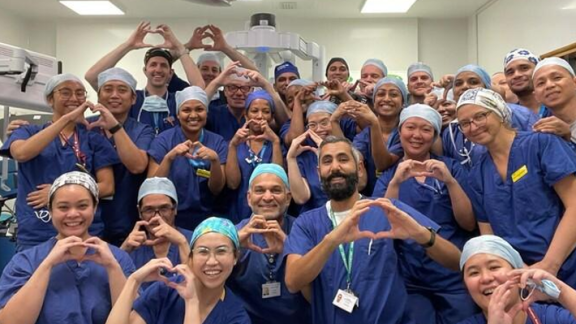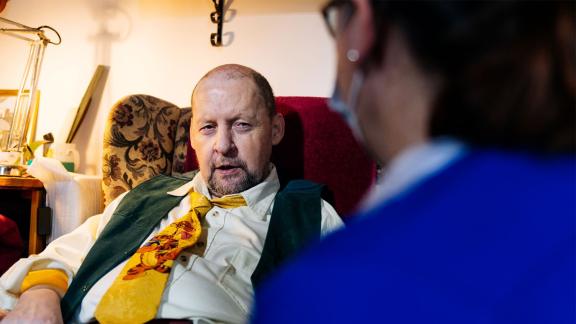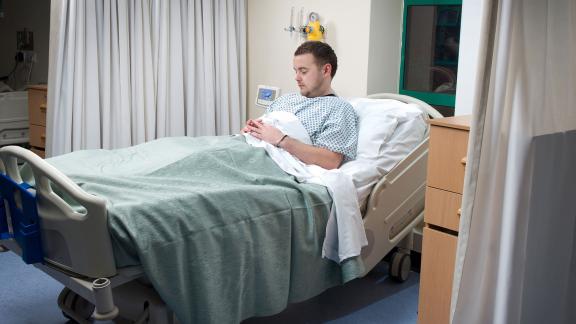Reducing the elective backlog: Guy’s and St Thomas’ NHS Trust

Overview
The urology team at Guy’s and St Thomas’ reduced the backlog of patients awaiting prostate procedures, by developing a highly efficient programme to maximise the number of patients treated using high-intensity theatre lists, or ‘HIT lists'.
What the organisation did
Elective recovery and reducing the backlog of patients waiting for treatment is a challenge for all hospitals across the country. There have been many factors that have led to the backlog increasing, such as COVID-19. Elective recovery is also challenging due to limited resources, staffing and capital investment. All hospitals are working hard to try to reduce the backlog and provide timely treatment to patients.
The urology team at Guy’s and St Thomas’ NHS Trust had an increasing backlog of patients waiting for a prostate procedure. They worked together to tackle to backlog within existing resources by working differently and using existing resources.
Improvement
Guy’s and St Thomas’ developed a super-efficient but safe programme to maximise the number of patients treated using high-intensity theatre lists, known as ‘HIT lists'. They focus on one type of procedure at a time, the HIT lists take place at weekends, and require careful planning to select suitable patients.
The team redesigned and created dedicated theatre lists to accommodate additional patients and maximise theatre usage. Through organisation and careful planning, they were able to increase productivity by reducing waste, strict case mix and careful planning. Several multidisciplinary meetings were required for each HIT list to select suitable cases, patients and team members and to plan the equipment and order of the lists. They include managers, administration staff, therapists, nurses, pharmacists, anaesthetists and surgeons.
To carry out the HIT lists, there was an increase in the number of anaesthetic, surgical and theatre staff to minimise the turnaround time between cases, making more time available for the surgeon to operate. Using two theatres and three teams meant the surgeon could go between cases without having to wait for the next patient. This allowed more patients to be operated in the same time-period.
Outcome
Surgeons at Guy’s and St Thomas’ carried out a week’s worth of operations in one day to help reduce the surgery backlog. Eight men with prostate cancer underwent a robotic-assisted radical prostatectomy, which was the first time in the UK that one hospital has completed eight cases of this kind in one day.
The trust has held over 17 HIT lists and treated 344 patients across eight specialities, including gastrointestinal, gynaecology, orthopaedics and ear nose and throat (ENT).
Mick Jennings, from West Dulwich in South London, had a robotic-assisted radical prostatectomy at Guy’s Hospital on a HIT list, he said: “It was great – I was told that the surgery was part of a HIT list beforehand, so I was prepared for everything to be quicker than usual.
“You could tell the staff were really energised with the concept and keen to do their best. I didn’t find the pace a problem at all – I found they were trying super hard to do it well.”
The innovation and organisation of the HIT lists has been led by Dr Imran Ahmad, consultant anaesthetist and deputy clinical director for anaesthesia and theatres at Guy’s and St Thomas’. Dr Ahmed said: “For many surgical procedures, the time required to perform the actual surgery is significantly less than the time spent preparing and anaesthetising the patient, setting up the equipment and helping the patient to recover – in some cases the operating time can be as little as 30 per cent of the duration of the whole operating list.
“We have looked at every aspect of the patient’s pathway in detail to see where we can safely improve on efficiency, save time and parallel process to increase the surgeon’s operating time, by reducing non-operative time. It requires a dedicated multidisciplinary team and lots of preparation, which is the key to our success. It’s a bit like a Formula 1 pit stop crew where you have people who are all well trained and work together to do something very efficiently and safely.
“Our HIT lists have been so efficient that we have never overrun, despite the large number of cases per list, and our on-day cancellation rate is less than 0.5 per cent which is much lower than the national average.”
Lessons learned
- Careful planning and taking the time to organise the work across a MDT setting can help increase productivity.
- Thinking differently about how to make changes to work better, smarter and effective can help generate improvements.
Contact details
For further information, please contact Guy's and St Thomas's media enquiries on 020 7188 5577 or email media enquiries.
Further information
More information is available on Guy's and St Thomas's website


